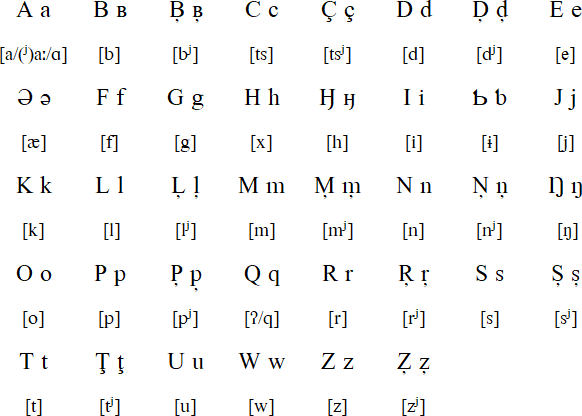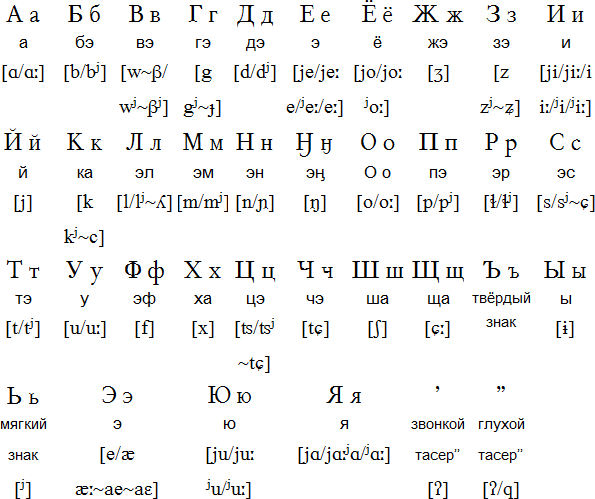Nenets belongs to the Samoyedic branch of the Finno-Ugric languages. It is spoken by about 27,000 people in Siberia, particularly in the Nenets, Yamalo-Nenets, and Taymyr Autonomous Okrugs, in the Komi Republic, and in the eastern parts of Murmansk Oblast on the Kola peninsula in the Russian Federation.
There are two main dialects of Nenets: Tundra Nenets and Forest Nenets, and there is only limited mutual intelligibility between them. About 95% of Nenets speakers speak Tundra Nenets.
Nenets first appeared in written form in the 1830s in religious texts published by Venyamin Smirnov, an archimandrite or superior bishop in the Eastern Orthodox church. Before that, the Nenets used various pictographic symbols called "tamga" to mark property. In 1931, a standard, Latin-based orthography was established. That was abandoned when the Cyrillic alphabet was adopted in 1937



Some of the information on this page was provided by Wolfram Siegel and 이윤호
Ет хибяри ненэць соямарианта хуркари правада тнява, ӈобой ненээя ниду нись токалба, ӈыбтамба илевату тара.
Et xibjari nenėc’ sojamarianta xurkari pravada tnjava, ṇoboj nenėėja nidu nic’ tokalba, ṇybtamba ilevatu tara.
All human beings are born free and equal in dignity and rights. They are endowed with reason and conscience and should act towards one another in a spirit of brotherhood.
(Article 1 of the Universal Declaration of Human Rights)
Information about Nenets | Numbers
Information about the Nenets language and people
http://en.wikipedia.org/wiki/Nenets_language
http://www.helsinki.fi/~tasalmin/tn.html
http://www.eki.ee/books/redbook/nenets.shtml
Abaza, Abkhaz, Adyghe, Aghul, Akhvakh, Akkala Sámi, Aleut, Altay, Alyutor, Andi, Archi, Assyrian / Neo-Assyrian, Avar, Azeri, Bagvalal, Balkar, Bashkir, Belarusian, Bezhta, Bosnian, Botlikh, Budukh, Bulgarian, Buryat, Chamalal, Chechen, Chelkan, Chukchi, Chulym, Chuvash, Crimean Tatar, Dargwa, Daur, Dolgan, Dungan, Enets, Erzya, Even, Evenki, Gagauz, Godoberi, Hinukh, Hunzib, Ingush, Interslavic, Itelmen, Juhuri, Kabardian, Kaitag, Kalderash Romani, Kalmyk, Karaim, Karakalpak, Karata, Karelian, Kazakh, Ket, Khakas, Khanty, Khinalug, Khorasani Turkic, Khwarshi, Kildin Sámi, Kili, Komi, Koryak, Krymchak, Kryts, Kubachi, Kumandy, Kumyk, Kurdish, Kyrgyz, Lak, Lezgi, Lingua Franca Nova, Lithuanian, Ludic, Macedonian, Mansi, Mari, Moksha, Moldovan, Mongolian, Montenegrin, Nanai, Negidal, Nenets, Nganasan, Nivkh, Nogai, Old Church Slavonic, Oroch, Orok, Ossetian, Pontic Greek, Romanian, Rushani, Russian, Rusyn, Rutul, Selkup, Serbian, Shor, Shughni, Siberian Tatar, Sirenik, Slovio, Soyot, Tabassaran, Tajik, Talysh, Tat, Tatar, Teleut, Ter Sámi, Tindi, Tofa, Tsakhur, Tsez, Turkmen, Tuvan, Ubykh, Udege, Udi, Udmurt, Ukrainian, Ulch, Urum, Uyghur, Uzbek, Veps, Votic, Wakhi, West Polesian, Xibe, Yaghnobi, Yakut, Yazghulami, Yukaghir (Northern / Tundra), Yukaghir (Southern / Kolyma), Yupik (Central Siberian)
Languages written with the Latin alphabet
Page last modified: 23.04.21
[top]
You can support this site by Buying Me A Coffee, and if you like what you see on this page, you can use the buttons below to share it with people you know.

If you like this site and find it useful, you can support it by making a donation via PayPal or Patreon, or by contributing in other ways. Omniglot is how I make my living.
Note: all links on this site to Amazon.com, Amazon.co.uk
and Amazon.fr
are affiliate links. This means I earn a commission if you click on any of them and buy something. So by clicking on these links you can help to support this site.
[top]